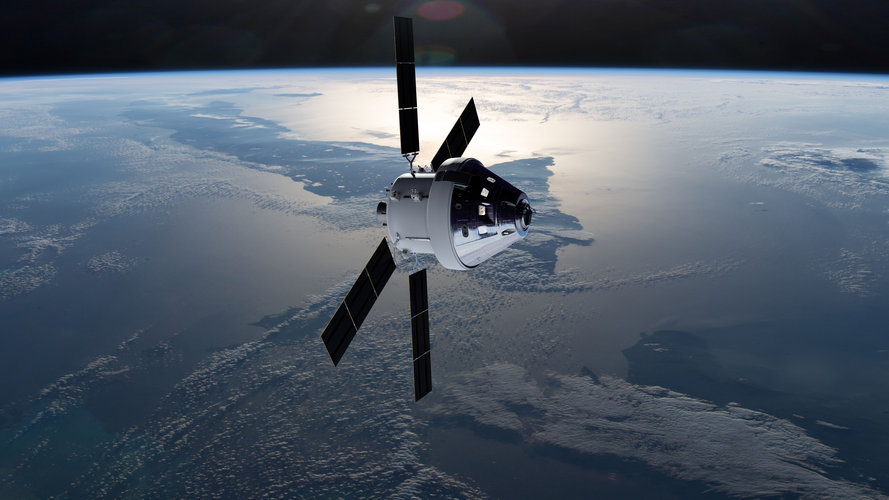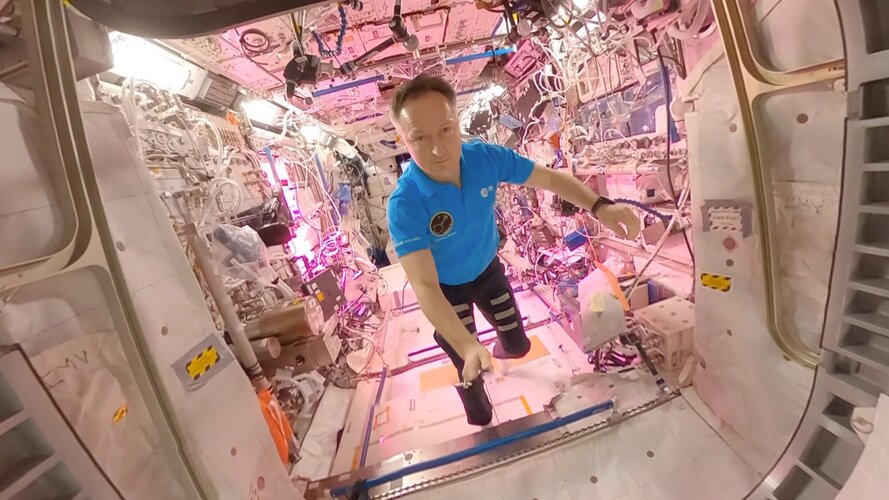
Copernical Team
Small companies partake in ESA’s European Service Module

ESA has involved ten European countries in the development of the European Service Module which is part of NASA’s Orion spacecraft soon to launch to the Moon from NASA’s Kennedy Space Center in Florida. Four European small and medium-sized enterprises (SMEs) took part.
New Space Station experiments study flames in space
 Americans can feel safer in their homes now than decades ago thanks to studies and standards that have removed highly flammable materials in clothing, beds, and furniture. NASA relies on similar studies and standards to protect astronauts when selecting materials for spacesuits and spacecraft.
But fire behaves differently in space. Changes in gravity and air flow can alter the way it sprea
Americans can feel safer in their homes now than decades ago thanks to studies and standards that have removed highly flammable materials in clothing, beds, and furniture. NASA relies on similar studies and standards to protect astronauts when selecting materials for spacesuits and spacecraft.
But fire behaves differently in space. Changes in gravity and air flow can alter the way it sprea UNSW Sydney buys nanosatellite bus from NanoAvionics
 The University of New South Wales (UNSW) in Sydney, Australia, has contracted mission integrator NanoAvionics to build a nanosatellite bus for UNSW's satellite innovation laboratory. As part of the collaboration, NanoAvionics will deliver a 6U nanosatellite bus fully assembled and tested on a functional level, ready for its research and educational purposes. Payload integration for laboratory te
The University of New South Wales (UNSW) in Sydney, Australia, has contracted mission integrator NanoAvionics to build a nanosatellite bus for UNSW's satellite innovation laboratory. As part of the collaboration, NanoAvionics will deliver a 6U nanosatellite bus fully assembled and tested on a functional level, ready for its research and educational purposes. Payload integration for laboratory te PathFinder Digital delivers new range of "BAT" Satellite Terminals
 PathFinder Digital is now delivering the next generation of its "BAT" line of ground mobile satellite communication terminals designed and built for military applications. For over ten years, PathFinder has been providing the U.S. Army, U.S. Air Force, U.S. Marines and U.S. Navy ruggedized vehicle mounted and case based VSATs known as the "BAT" family of terminals. PathFinder's BAT-850 VSAT is t
PathFinder Digital is now delivering the next generation of its "BAT" line of ground mobile satellite communication terminals designed and built for military applications. For over ten years, PathFinder has been providing the U.S. Army, U.S. Air Force, U.S. Marines and U.S. Navy ruggedized vehicle mounted and case based VSATs known as the "BAT" family of terminals. PathFinder's BAT-850 VSAT is t "Impossible" breakthrough brings fusion energy device closer to realization
 Scientists have achieved a remarkable breakthrough in the conceptual design of twisty stellarators, experimental magnetic facilities that could reproduce on Earth the fusion energy that powers the sun and stars. The breakthrough shows how to more precisely shape the enclosing magnetic fields in stellarators to create an unprecedented ability to hold the fusion fuel together.
"The key thing
Scientists have achieved a remarkable breakthrough in the conceptual design of twisty stellarators, experimental magnetic facilities that could reproduce on Earth the fusion energy that powers the sun and stars. The breakthrough shows how to more precisely shape the enclosing magnetic fields in stellarators to create an unprecedented ability to hold the fusion fuel together.
"The key thing AFRL holds directed energy and kinetic energy wargaming experiment
 The Air Force Research Laboratory's Directed Energy Directorate hosted a collaborative wargame with its sister AFRL unit, the Munitions Directorate, at Kirtland AFB, Jan. 24-28, 2022. The Directed Energy and Kinetic Energy Directed Energy Utility Concept Experiment, or DEKE DEUCE, explored synergies between directed energy and kinetic concepts in the future battlespace.
"DEKE DEUCE require
The Air Force Research Laboratory's Directed Energy Directorate hosted a collaborative wargame with its sister AFRL unit, the Munitions Directorate, at Kirtland AFB, Jan. 24-28, 2022. The Directed Energy and Kinetic Energy Directed Energy Utility Concept Experiment, or DEKE DEUCE, explored synergies between directed energy and kinetic concepts in the future battlespace.
"DEKE DEUCE require AFRL holds collaborative space domain awareness event
 The Air Force Research Laboratory Space Vehicles and Directed Energy Directorates hosted the 9th Annual Space Domain Awareness Leadership Workshop at Kirtland AFB, January 25 - 27. More than 100 senior leaders from across the Department of Defense and government laboratories participated in the combined in person and virtual event.
Those organizations participating included the Space Syste
The Air Force Research Laboratory Space Vehicles and Directed Energy Directorates hosted the 9th Annual Space Domain Awareness Leadership Workshop at Kirtland AFB, January 25 - 27. More than 100 senior leaders from across the Department of Defense and government laboratories participated in the combined in person and virtual event.
Those organizations participating included the Space Syste A game-changing satellite communication technology from Aston and Pulse Power
 Aston University has been working with Pulse Power and Measurement Ltd (PPM) through a knowledge transfer partnership (KTP) to develop a game-changing approach to technology used in the radio-over-fibre communications industry.
The project will look to transform the connection between low earth orbit (LEO) satellite antenna dishes and modems through optics rather than electronics, deliveri
Aston University has been working with Pulse Power and Measurement Ltd (PPM) through a knowledge transfer partnership (KTP) to develop a game-changing approach to technology used in the radio-over-fibre communications industry.
The project will look to transform the connection between low earth orbit (LEO) satellite antenna dishes and modems through optics rather than electronics, deliveri Columbus, Kibo and a Dragon | Cosmic Kiss 360°
 Video:
00:06:06
Video:
00:06:06
Join ESA astronaut Matthias Maurer on a 360° fly-through of Europe’s Columbus laboratory, Japan’s Kibo Module and the Crew Dragon capsule on the International Space Station.
Matthias has been living and working on the International Space Station for around 100 days, following the launch of Crew-3 from NASA’s Kennedy Space Center in Florida on 11 November 2021. He will spend approximately six months in orbit for his Cosmic Kiss mission. Much of this time is being spent inside the Columbus lab supporting European and international science.
Columbus is ESA’s single largest contribution to the International Space Station and was
Musk donates satellite gear to reconnect Tonga
 Tonga says space entrepreneur and Tesla founder Elon Musk has donated 50 satellite terminals to help the volcano-damaged Pacific island reconnect with the world.
Tonga's telecommunications system has been severely restricted since January 15 when a violent volcanic eruption and tsunami severed its underwater fibre-optic cable.
Musk's Space X corporation is providing 50 very-small-apertu
Tonga says space entrepreneur and Tesla founder Elon Musk has donated 50 satellite terminals to help the volcano-damaged Pacific island reconnect with the world.
Tonga's telecommunications system has been severely restricted since January 15 when a violent volcanic eruption and tsunami severed its underwater fibre-optic cable.
Musk's Space X corporation is providing 50 very-small-apertu 
